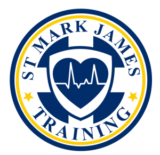Taking care of a pet, especially pet dogs and cats, is much like taking care of a child. Most often, they are treated as important members of the family. Pet dogs and cats even sleep beside their owners at night. So when pets get injured, it’s very similar to seeing a family member or loved one get injured. However, because pets express their feelings very differently, it can be hard to tell if they are hurt or unwell.
In a Pet First Aid and CPR class, you will learn how to recognize a variety of pet emergencies – from a simple cut to a heart attack. Sign up for a training course in pet emergency management at Kelowna First Aid today.
Enrollment period at Kelowna First Aid
Pet First Aid and CPR training courses are only offered once a month, so enrollment periods are usually filled up with a lot of prospective students. Students who need pet first aid and CPR training and certification are encouraged to enroll very early, even as early as two months in advanced since our programs quickly get filled up.
Recognizing Your Pet is hurt
The major problem with having an unwell pet is their inability to articulate their feelings well. Pets can’t talk, so pet owners have to rely on observing their pets eating habits and activity for changes. Pets who are hurt or unwell usually exhibit poor appetite and low energy. The owner has to observe him or her very carefully, and to check him or her over for injuries. If a limb is injured, the pet will usually limp and avoid putting weight on the injury.
Pet First Aid
Giving first aid to an injured pet is the the same as managing injuries in humans. Be very gentle with them to avoid scaring or making them agitated. For a cut, be sure to clean, disinfect, and wrap up the wound well. Because a pet is very active, he or she can injure the affected area again so it is best to cover up the injury well. You can even splint the limb if the injury is bad.
Heart Attacks in Pets
Heart attacks in pets such as dogs and cats usually manifest the same way as heart attacks in humans. The pet can suddenly whine and express feelings of discomfort, followed by low energy, and suddenly falling unconscious. If the pet cannot be roused from unconsciousness, start cardiopulmonary resuscitation (CPR) immediately.
Training at Kelowna First Aid
The Pet First Aid and CPR program we offer students is a monthly session that runs for four hours long. To best prepare our students for pet emergencies, we let them practice their skills on dog and cat mannequins. By doing this, students are able to react quickly to emergencies with their pet animals and manage them adequately.
Certificates are awarded once the student passes the certification test after training. These credentials do not expire like credentials for human CPR and first aid do. Kelowna First Aid’s credentials are valid all over the country.
